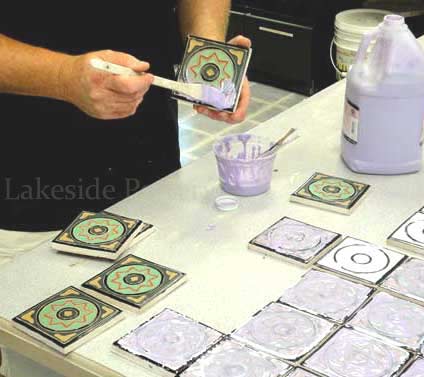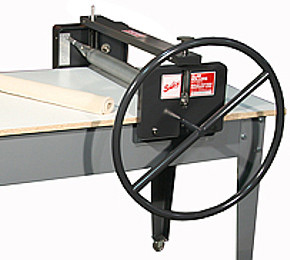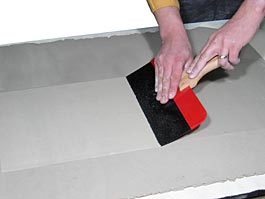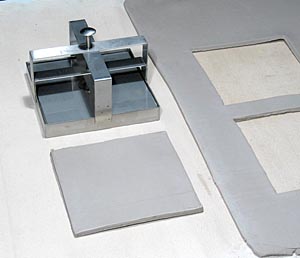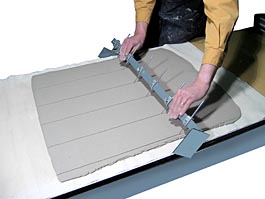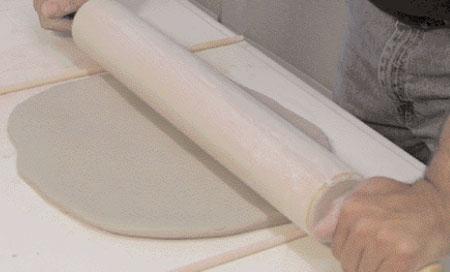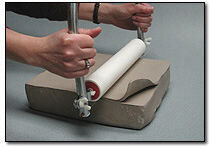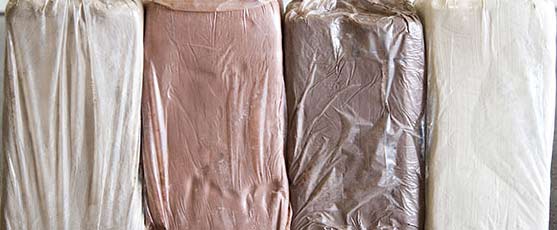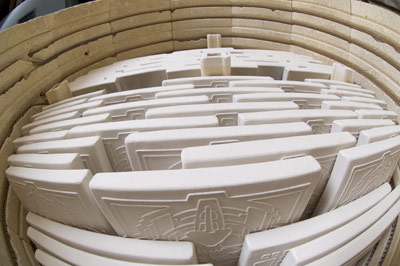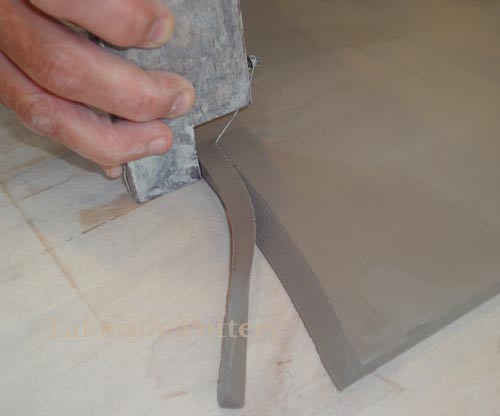how to make a cutout design on pottery
| Making ceramic tiles or flat slab forms without the right equipment and process knowledge can be very disappointing mostly due to warpage. The following tutorial could help you in making tiles successfully. For durability and waterproofness, you want a clay body that matures at the temperature you will glaze fire at. This is especially critical for tiles which are outside or in bathrooms. The absorption rate after firing should be 3% or less, otherwise water will seep in and cause the tiles to crack. If waterproofness is not a requirement, you can sometimes achieve flatness easier by under firing the clay. This is something to experiment with, as other times a tile that is warped after bisque firing will become flat after glaze firing if the clay is allowed to mature. See APPENDIX A for making weatherproof tiles for outdoors use Low fire, smooth, earthenware clay is generally the worst to use for tiles. Not only does it not fully vitrify, it's lack of grog can be very challenging. Since these are low fired (unvitrified) and unglazed they become easily soiled and must be sealed several times a year. Working with the Clay Make sure your tiles are thick enough. If tiles are too thin, they will tend to warp. An 8" square tile should be at least one half inch thick. This is thicker than commercial tiles you buy, but those are made with a special dry pressing process that allows them to be thinner. It is important not to bend your slabs while they are wet. If you do, the clay will have a tendency to warp once it is dry. So find a way to handle the slab without bending them. How? For starters, if you have rolled the slab onto fabric, do not peel the slab off the fabric. Instead, put a hard board (plywood, drywall, etc.) on top of the slab, flip the whole thing, then peel the fabric off the clay. Or simply slide the slab onto a drying board without bending it. Alternatively, you can roll the slabs directly onto a board and keep them there, flat, until they can be slid off. This works with slab rollers like the Brent where the clay stays stationary and the roller moves across it. To prevent warpage, some people roll out the slab, flip it over, and roll it again. Especially if using a slab roller that has a single roller. Since the North Star type has two rollers that the slab runs through, it is thought to compress the clay equally on both sides so this step isn't needed. You can use various materials over your canvas to eliminate the canvas texture on the tile, as well as keep your canvas from becoming wet and the clay sticking. Heavy Pellon is sometimes used. It is an interfacing material found in fabric stores that doesn't stretch or bunch up. Vinyl flooring, and old lithographic printer's mats are also used for rolling slabs onto. Alternatives to Rolling Slab Some people press their tiles. You can make a bottomless frame out of wood, pound the clay into this form, use your cut off wire to cut off excess clay, then push the clay out the bottom. To avoid bending, use a piece of wood the size of the clay to push it through. You will have to let the clay dry to the point where it doesn't stick to the wood, or use something like WD40 or cooking oil to coat the wood. Some people cut their tiles directly off the block of pugged clay. You can buy devices that act like cheese slicers to cut the clay off at a certain thickness. Or, to make your own, take two wood dowels (or wood strips) and make notches at even intervals (one half inch apart for half inch thick tiles.) Wrap a piece of wire between and around the wood dowels, starting at the top notch. Grab onto one piece of wood with each hand, pull the wire tight, and sliding the wood pieces toward, pull the wire evenly through the clay. Make sure you hold the wood pieces vertical as you pull. Then move the wire to the next lower notch and repeat. Cutting the Tiles Make a template from metal or wood to make it easy to cut out same size tiles. 1. Place each tile between two pieces of drywall (also called sheetrock.) This is the stuff used to build walls. You can sandwich many tiles between layers of sheetrock and stack them up. The moisture is pulled evenly out of both sides. A variation on this is to dry between layers of three quarter inch thick plywood, or layers of calcium silicate board (often used as a non-asbestos fire proofing board). 2. Place the tiles on a wire rack to dry. This allows good air circulation. A variation on this is drying on plastic grids that are often used in fluorescent light fixtures. Grooves: For glaze firing at low temperatures, tiles can be put into many types of tile setters. But if you are using high fire clay and firing it to maturity, the tiles will slump at high temperatures. In these cases you have to fire the tiles on a flat surface. Fire tiles on a kiln shelf dusted with silica sand. Make a moat around your tiles by putting bars of clay around their edges. This helps them heat from above and below rather than the edges heating faster. Remember that clay will shrink, and you have to adjust for this when making your tiles. To determine shrinkage, take a slab of clay and incise a line 100 millimeters long. Re-measure this line at the bisque and high fire state. If the line ends up 90 mm's long then your shrinkage rate is 10%. If your ending number is 87mm's then your shrinkage rate is 13%, etc. Remember to make the first line at the same dryness stage as you will be cutting your tiles, as there will be shrinkage between wet and leather hard as well. Considerations For making Large Tile (over 12" x 12") 1) Use clay body with higher grog content (10% +) Note: To identify cooling crack, if the tile cracks and the glaze edge is sharp - it is a cooling crack. It indicates that the crack occurred after the cooling passed the glaze melting point. APPENDIX A - Making Tiles For Outdoors Use Clay absorption rate of 3% or lower is required for tile to withstand frost. The absorption test typically used is established by the American Society for Testing and Materials. First, a fired tile is weighed dry (Wd), then soaked for 24 hours in cold water. Immediately after being dried with a towel, the tile is weighed again (Ws). The absorption rate is then calculated from the two measurements using the formula below: In other words, to find the absorption rate, subtract the saturated weight from the dry weight. Divide the difference by the dry weight. For example, let's say a pot weighed 0.75 pounds after it was fired to maturity. After getting it wet, it weighed 0.8 pounds. The difference is 0.05. Dividing 0.05 by 0.75, we get 0.067, or an absorption rate of 6.7%. To test the fit between the glaze and the clay body. Put glazed tiles through a hot dishwasher cycle, then into the freezer for a day or two, then back into the dishwasher, and again returning it to the freezer. Repeat this process several times (7-10), then check for crazing. See example specification of a good low fire clay for outdoors use: Standard 417 Red Earthenware - Cone 06-02 |
|
how to make a cutout design on pottery
Source: https://www.lakesidepottery.com/HTML%20Text/Tips/Making%20Ceramic%20Tiles.htm

